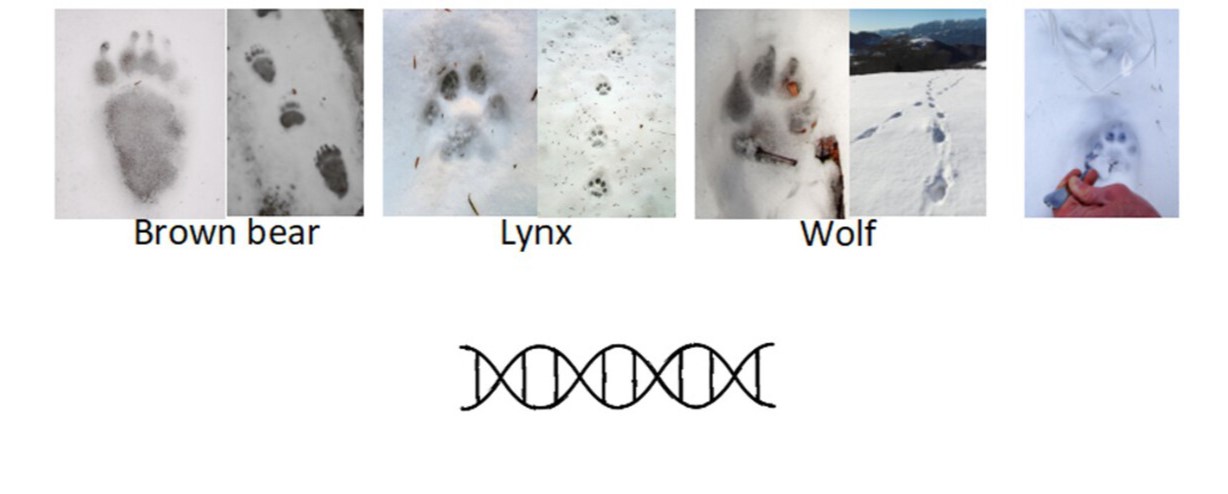Researchers from the Biotechnical Faculty of the University of Ljubljana, DivjaLabs, University of Laussanne and LECA in Grenoble published a scientific article on successful recognition of brown bear (Ursus arctos), wolf (Canis lupus) and lynx (Lynx lynx) individuals from their eDNA collected from their snowtracks. The method has vast potential to complement the standard non-invasive genetic methods used for wildlife.

Snow tracks photo credits: Miha Krofel.
Collecting noninvasive genetic samples, especially lynx, is not as easy as one might think. However, in winter while walking over snowcovered ground, the animals leave their prints in the snow and usually researchers use snowtracking to help them find faeces, hair, and urine samples. In animal tracks, cells present on the animal paw are deposited on the snow surface due to friction against the ground and this is a source of environmental DNA (eDNA). LIFE Lynx team learned about this method at a knowledge exchange visit to LECA institute and later successfully implemented it in practice. In this research, individual genotypes were obtained for all three species, but genotyping performance differed among samples and species. Even though the proportion of samples genotyped to individuals was higher for brown bear (5/7) and wolf (7/10) than for lynx (4/9), the results show that reliable individual genotyping, including sex identification, is now possible from eDNA in snow tracks of all three species.
